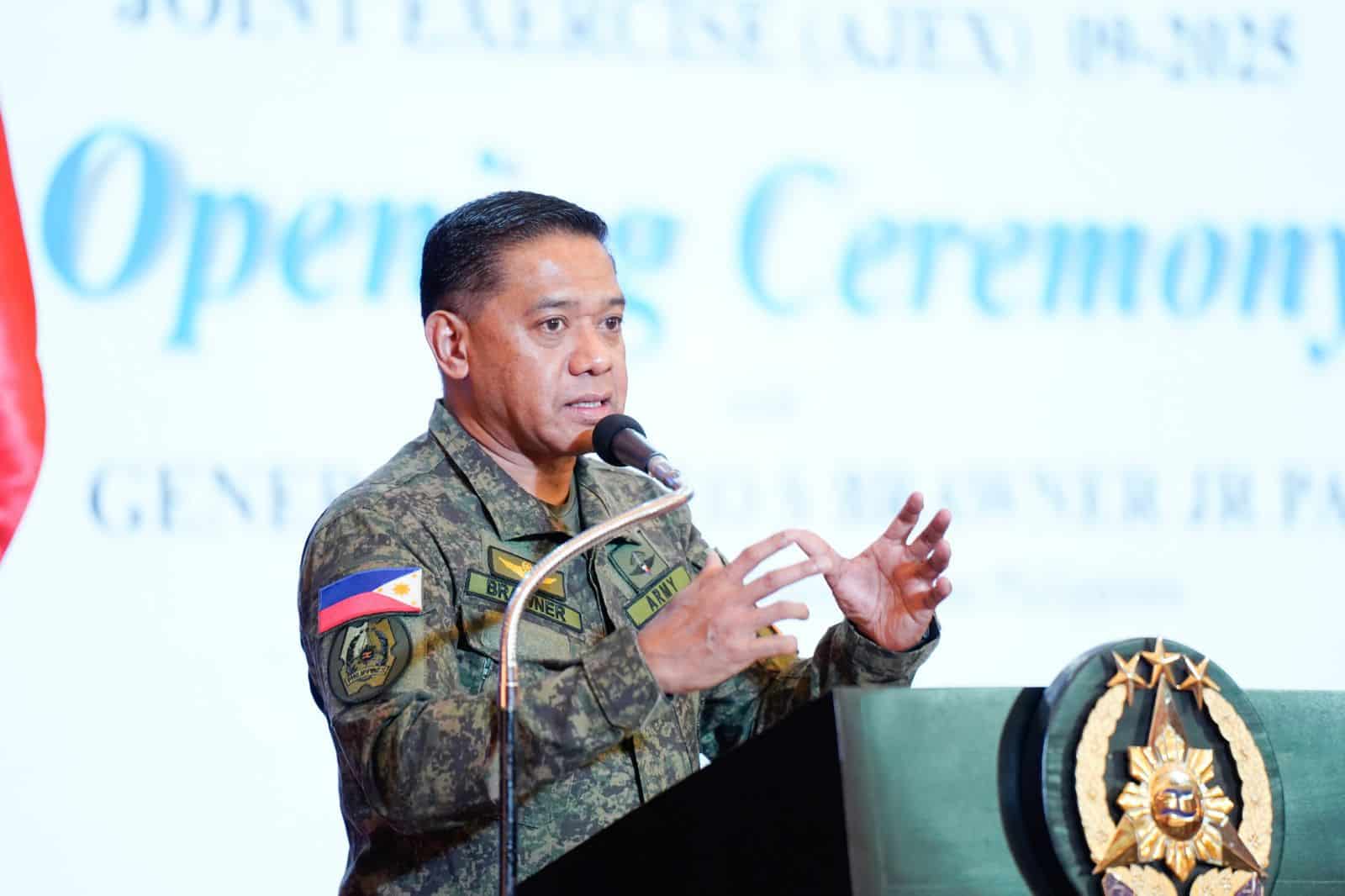Brawner: AFP should hold out up to 30 days before US aid in war scenario

Armed Forces of the Philippines chief Gen. Romeo Brawner Jr. delivers a keynote speech during the opening ceremony of the AFP Joint Exercise on November 4, 2025. — Photo from AFP
MANILA, Philippines — The Armed Forces of the Philippines (AFP) is continuously gearing up so that it could “rely” on its own and hold out for up to 30 days before reinforcements from the United States arrive in a wartime scenario, military chief General Romeo Brawner Jr. said on Tuesday.
Brawner said the holdout period was the marching order of President Ferdinand Marcos Jr. to the 160,000 active military troops nationwide.
“The order of our President Ferdinand Marcos Jr. is that we will — we should be able to fight and preserve our forces for at least 20 to 30 days,” Brawner said in an interview on the opening of the AFP Joint Exercise (AJEX), which was joined by its three major service branches.
The AJEX aims to test the interoperability of AFP’s three main service branches — namely the army, navy, and air force.
Now on its 9th iteration, this year’s AJEX will be held from November 4 to 14.
Police, military, PCG to ‘act as one force’
This year’s iteration of AJEX will see the presence of personnel from the Philippine Coast Guard and the Philippine National Police, as Brawner noted the need to involve other uniformed services in preparations.
“If something happens, we need to combine and we need to act as one force,” he said.
The AFP will also utilize its own assets during AJEX to assess its actual capabilities and identify gaps that need to be addressed, according to him.
He also said the AFP is now in the process of revising its Unilateral Defense Plan to ensure that the country can weather an initial attack.
‘We will fight first’
In his keynote speech, Brawner also told troops that “our ally and our partners are expecting us to fight the war ourselves during the first part of the conflict.”
“We will fight the war first,” he also said in his speech. “That’s why our unilateral defense plan and this exercise is very important.”
Only after holding out for such a period will the United States— the country’s sole treaty ally — enter the picture.
“Of course we will fight first, and then, we are also expecting reinforcements or help from our ally,” he said, noting that it is provided for under the Mutual Defense Treaty (MDT) of Manila and Washington that calls for each other’s defense in case of an “armed attack.”
Deterrence amid West PH Sea woes
Beijing’s unprecedented aggressive actions in the West Philippine Sea led some experts to suggest that the country could invoke MDT, which would compel Washington to come into Manila’s defense.
https://globalnation.inquirer.net/211007/carpio-ph-can-invoke-mdt-on-chinese-laser-attack
Such actions are based on Beijing’s sweeping claim in almost the entire South China Sea, effectively dismissed by a landmark 2016 arbitral award, which ruled heavily in favor of Manila.
Brawner said the country’s challenges in the West Philippine Sea is proof that “deterrence is not built overnight” and is being strengthened by drills like AJEX.
“In these pressing times when our sovereignty is constantly challenged, exercises become our living proof of readiness and resolve — they edify not only our defenses but also our collective will to protect every inch of our maritime domain,” Brawner said.
“As I have always said, we are already at war — I want us to have that mindset,” he continued. “We are not at war with bullets and bombs but with disinformation, with coercion and with encroachment into our territories, into our exclusive economic zone.” /das


















